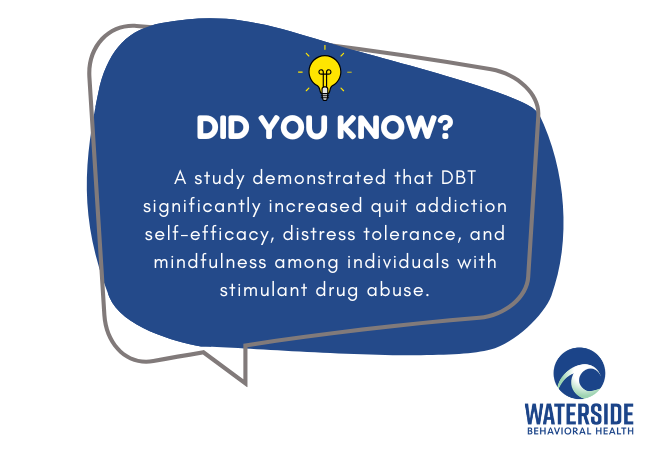Trauma can leave long-lasting emotional and psychological scars that linger well beyond the original event. For many individuals, these emotional wounds affect their daily functioning, relationships, self-worth, and ability to feel safe in the world. While traditional therapy can offer support, certain individuals may need more structured and targeted approaches to begin healing. One highly effective therapeutic intervention that has gained attention in trauma recovery is Dialectical Behavior Therapy (DBT).
Developed by psychologist Marsha Linehan, DBT was initially designed for individuals with borderline personality disorder and chronic suicidal ideation. However, it has since been widely adapted for those struggling with a variety of mental health conditions, particularly those rooted in or exacerbated by trauma. DBT’s unique blend of cognitive strategies and mindfulness-based techniques offers clients a path to emotional regulation, improved distress tolerance, and ultimately, healing.
Understanding the Link Between Trauma and Emotional Dysregulation
Emotional trauma can fundamentally alter how a person experiences the world. Traumatic events, especially those that occur in early development or are prolonged in nature, can rewire the brain’s stress response. This often results in persistent feelings of hypervigilance, fear, sadness, anger, or emotional numbness.
Many trauma survivors find it difficult to manage intense emotional reactions. They may struggle with interpersonal conflict, experience frequent mood swings, or develop unhealthy coping mechanisms such as substance abuse or self-harm. The core of trauma healing lies in restoring emotional stability and helping individuals feel safe within themselves. This is where DBT can be a transformative force.
How DBT Addresses Trauma
DBT focuses on four core skill modules: mindfulness, distress tolerance, emotional regulation, and interpersonal effectiveness. Each of these skills supports trauma recovery in a unique and vital way.
Mindfulness, a foundational pillar of DBT, teaches individuals to become aware of their thoughts and feelings without judgment. This skill is essential in trauma recovery, as survivors often feel overwhelmed by intrusive memories or intense emotions. Mindfulness creates space between emotional stimuli and reactions, allowing individuals to pause and respond thoughtfully rather than impulsively.
Distress tolerance skills help clients cope with emotional crises in healthy ways. For those recovering from trauma, moments of distress may feel paralyzing. DBT offers practical tools like distraction, self-soothing, and radical acceptance to help navigate painful episodes without resorting to harmful behaviors.
Emotional regulation is a crucial component of trauma recovery, particularly for those whose experiences have left them prone to intense or unpredictable emotional states. DBT teaches individuals to identify, understand, and modulate their emotions effectively. This process helps clients build emotional resilience and reclaim a sense of control.
Interpersonal effectiveness teaches clients how to communicate their needs, set boundaries, and maintain healthy relationships. Trauma survivors often struggle with trust or assertiveness, particularly if their trauma was interpersonal in nature. These skills can rebuild a sense of safety and agency in their relationships.
The Integration of DBT with Other Therapeutic Modalities
DBT doesn’t exist in a vacuum. In fact, many mental health providers integrate DBT with other evidence-based treatments for a more holistic approach. Combining DBT with Cognitive-Behavioral Therapy in Massachusetts is common, as CBT helps individuals identify and challenge distorted thought patterns that may perpetuate anxiety or depression.
This integrative model is often part of broader Mental Health Treatment Programs Massachusetts that aim to address complex conditions like PTSD, substance use, and mood disorders concurrently. DBT’s structured format complements the goal-directed nature of CBT and the trauma processing focus of other therapies, creating a comprehensive treatment plan.
For example, a trauma survivor may engage in both DBT and Trauma Therapy in Massachusetts, utilizing DBT skills to manage symptoms between sessions while also working through specific memories and beliefs in trauma-focused sessions. This synergy improves treatment outcomes and ensures that clients receive the tools and insights they need for sustained healing.
The Importance of Consistent Structure in Trauma Recovery
One of DBT’s defining features is its structure. Clients typically participate in individual therapy, group skills training, and often have access to coaching between sessions. This consistency creates a therapeutic environment that fosters safety, predictability, and accountability—all of which are especially important for trauma survivors who may have lacked stability in their past.
The group component of DBT also provides a sense of community and shared understanding. Knowing they are not alone in their struggles can be profoundly healing for individuals who have felt isolated by their trauma. Group sessions provide opportunities to learn from others, receive feedback, and develop a support network grounded in empathy and growth.
Addressing Co-Occurring Conditions in Trauma Survivors
Many individuals dealing with trauma also face co-occurring mental health issues such as anxiety, depression, or substance use disorders. DBT is particularly effective in these cases due to its adaptability. For instance, a trauma survivor who also needs Anxiety Treatment in Massachusetts can benefit from the mindfulness and emotional regulation skills DBT offers. These tools not only reduce anxious thoughts but also improve tolerance to uncertainty—a core struggle for many with anxiety.
Likewise, individuals receiving Depression Therapy in Massachusetts may find that DBT helps reduce feelings of hopelessness and emotional numbness. By actively engaging with their thoughts, building mastery, and creating a life worth living, clients gradually reconnect with purpose and meaning.

Supporting Long-Term Recovery
Trauma recovery is not a linear process. Healing often requires time, patience, and the willingness to develop new ways of thinking and relating to oneself and others. DBT fosters long-term change by helping clients build emotional awareness, regulate reactions, and apply coping strategies consistently.
At a reputable Mental Health Treatment Center in Massachusetts, DBT can be part of a long-term care plan that includes medication management, peer support, and continued therapy. The emphasis is not just on managing symptoms but on cultivating a life of emotional wellness and balance.
Why Choose Waterside Behavioral Health?
Choosing the right partner in your healing journey is one of the most important decisions you can make—and at Waterside Behavioral Health, we take that responsibility seriously. We are more than just a provider of therapy services—we are a dedicated, trauma-informed Mental Health Treatment Center in Massachusetts that believes in treating the whole person, not just their symptoms.
What makes us different is our integrative and personalized approach to care. Our clinical staff is extensively trained in evidence-based practices, including Dialectical Behavior Therapy in Massachusetts, which we use as a cornerstone of our trauma recovery programs. However, we don’t stop there. We understand that trauma affects people differently, so we tailor every treatment plan to reflect each client’s personal experiences, goals, and co-occurring mental health needs.
Whether you’re healing from childhood trauma, a recent traumatic experience, or years of unresolved pain, our therapeutic environment is designed to feel safe, validating, and empowering. We provide individual therapy, DBT skills training, group support, and trauma-informed psychiatric care all under one roof—allowing you to address the root of your struggles while building a foundation for long-term recovery.
Additionally, we value accessibility and connection. Our staff is here to support you both inside and outside of session times. We ensure that each client feels seen, heard, and supported throughout every stage of their treatment. At Waterside Behavioral Health, you’re not just receiving care—you’re building a life worth living, one skill and one breakthrough at a time.
Conclusion
Trauma may shape your past, but it does not have to dictate your future. Recovery is not just about forgetting or moving on from what happened—it’s about learning to live again with strength, awareness, and emotional resilience. Dialectical Behavior Therapy gives trauma survivors the tools they need to regulate emotions, tolerate distress, and heal their inner worlds without shame or fear. When paired with a comprehensive mental health support system, DBT can be transformative.
At Waterside Behavioral Health, we stand ready to walk beside you on this path toward recovery. Our team of compassionate professionals brings together experience, evidence-based practices, and a deep commitment to your wellness. Whether you’re dealing with trauma, anxiety, depression, or other emotional challenges, we believe in your ability to heal—and we’re here to help you prove it to yourself. Don’t wait to reclaim your peace of mind. If you’re ready to take that first step toward healing, reach out to our team today at (774) 619-7750. Let’s work together to help you move from surviving to thriving.
Frequently Asked Questions (FAQs)
What is Dialectical Behavior Therapy (DBT) and how does it help with trauma?
DBT is a structured, skills-based form of therapy designed to help individuals manage intense emotions, reduce self-destructive behaviors, and improve interpersonal effectiveness. For trauma survivors, DBT provides essential tools to navigate emotional dysregulation and build healthier coping mechanisms.
Can DBT be used alongside other trauma therapies?
Yes, DBT works very well in conjunction with other modalities like EMDR, exposure therapy, or traditional talk therapy. It enhances emotional regulation and distress tolerance, which helps individuals process trauma more effectively.
How long does it take to see results from DBT?
Many individuals begin to notice improvements in emotional control and interpersonal relationships within the first few months. However, full trauma recovery using DBT often takes longer and depends on the complexity of the trauma and consistency in therapy.
Is DBT effective for complex trauma or PTSD?
Absolutely. While DBT was originally developed for borderline personality disorder, it has proven highly effective in treating complex trauma and PTSD by helping clients build safety, regulate overwhelming emotions, and reduce harmful coping behaviors.
How is DBT different from Cognitive-Behavioral Therapy (CBT)?
CBT focuses on identifying and changing distorted thinking patterns, while DBT incorporates those strategies and adds mindfulness, emotional regulation, and distress tolerance skills—making it particularly useful for trauma and emotional sensitivity.
Do I need a diagnosis to benefit from DBT?
Not at all. While DBT is often used for specific diagnoses, anyone experiencing difficulty with emotion regulation, interpersonal relationships, or trauma-related distress can benefit from the skills and structure DBT provides.




